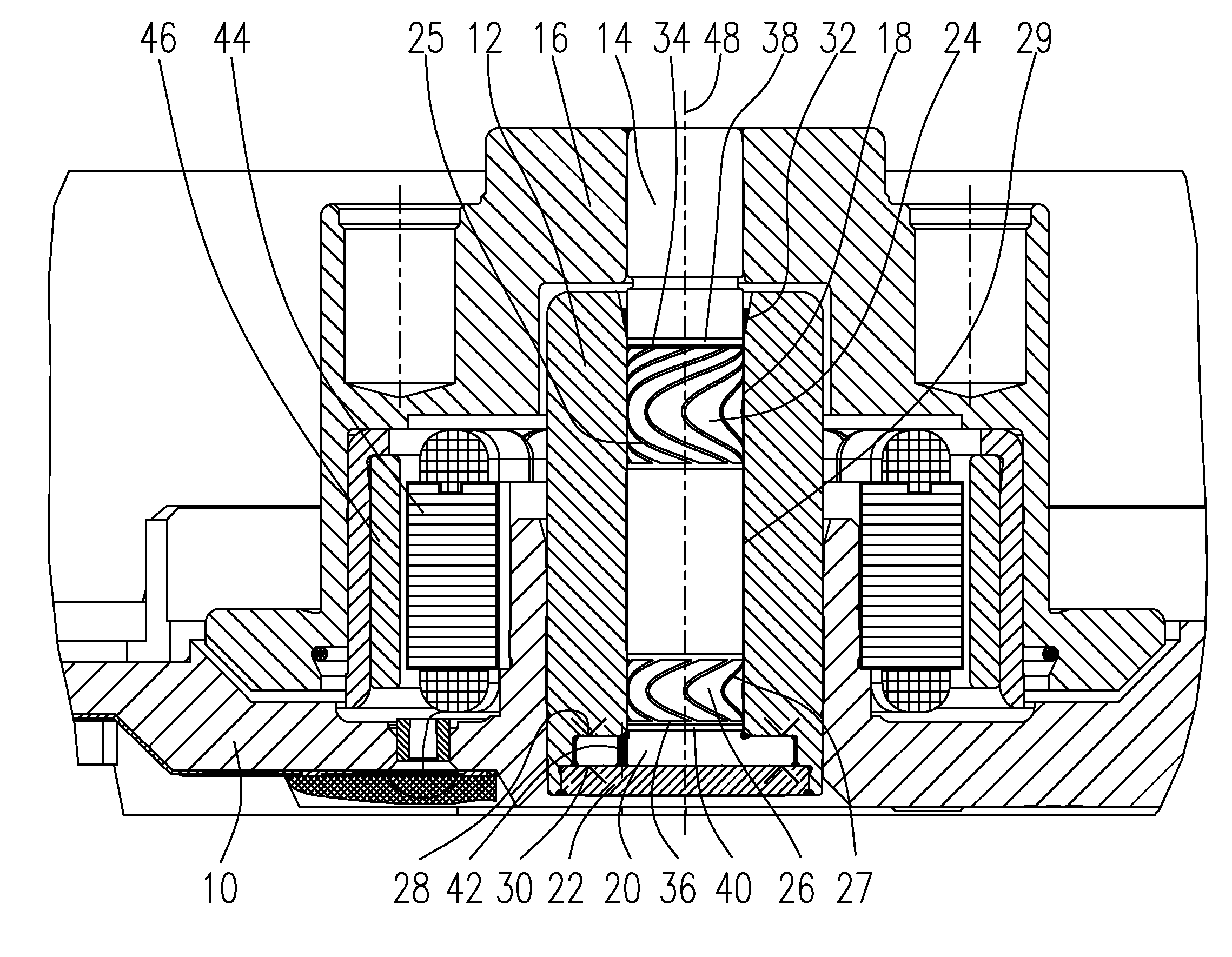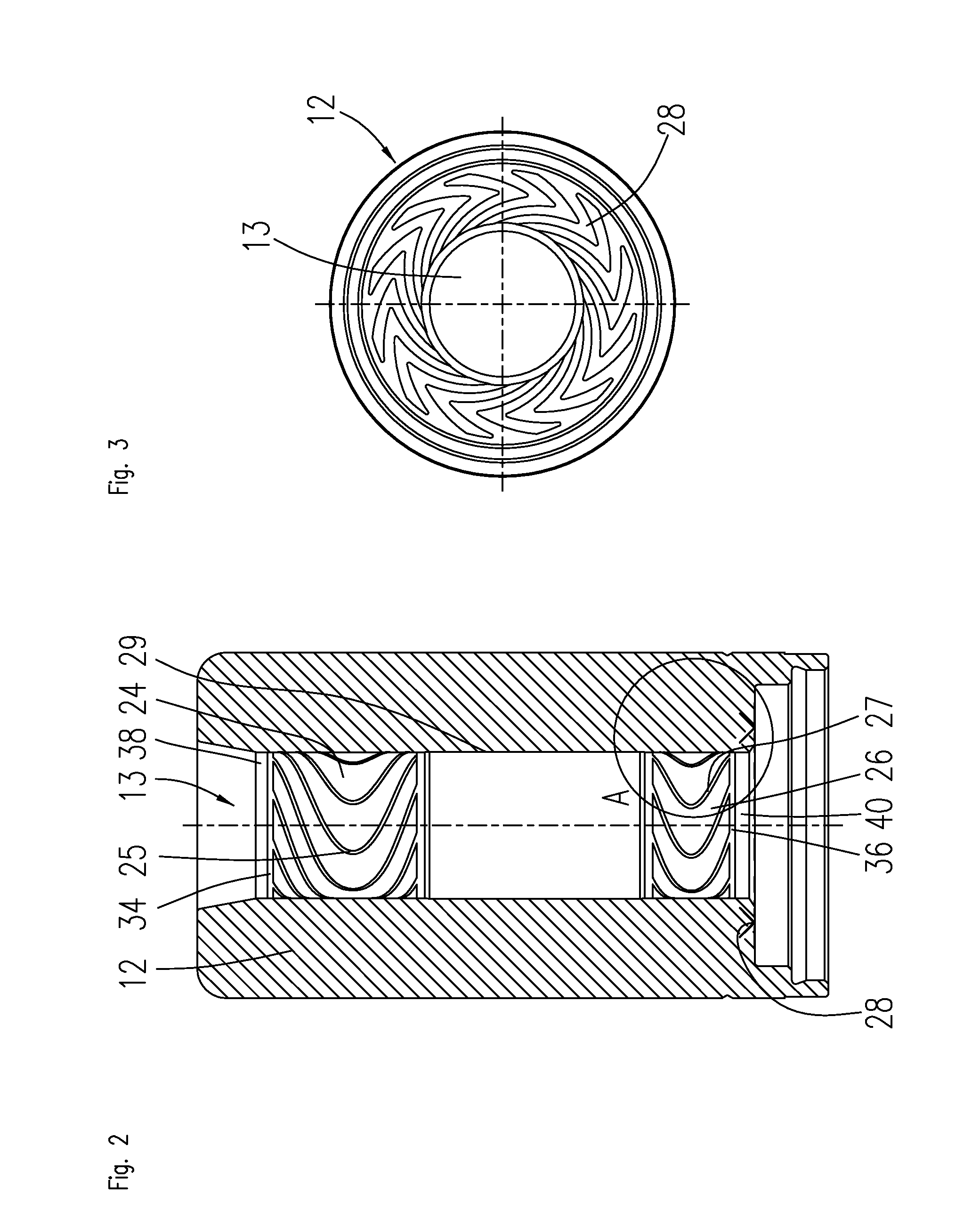Fluid dynamic bearing
a dynamic bearing and bearing bush technology, applied in the direction of sliding contact bearings, mechanical energy handling, mechanical equipment, etc., can solve the problems of affecting the bearing bush, and the bearing bush is prone to slipping, so as to reduce the wear
- Summary
- Abstract
- Description
- Claims
- Application Information
AI Technical Summary
Benefits of technology
Problems solved by technology
Method used
Image
Examples
Embodiment Construction
[0033]FIG. 1 shows a section through a spindle motor that is rotatably supported using a bearing according to the invention. The spindle motor comprises a stationary baseplate 10 in which a bearing bush 12 is fixed. The bearing bush 12 has an axial cylindrical bearing bore 13 in which a shaft 14 is rotatably accommodated. The bearing bush 12 and the shaft 14 together form a part of the fluid dynamic bearing system. A bearing gap 18 filled with a bearing fluid, such as a lubricating oil, is provided between the inside diameter of the bearing bore 13 and the somewhat smaller outside diameter of the shaft 14. The bearing gap preferably has a gap width of a few micrometers. The fluid dynamic bearing system comprises two radial bearing regions 24, 26 that are marked by corresponding radial bearing grooves 25, 27. The radial bearing grooves 25, 27 are provided on the surface of the bearing bore 13 and / or the surface of the shaft 14. The two radial bearing regions 24, 26 are separated axia...
PUM
 Login to View More
Login to View More Abstract
Description
Claims
Application Information
 Login to View More
Login to View More - R&D
- Intellectual Property
- Life Sciences
- Materials
- Tech Scout
- Unparalleled Data Quality
- Higher Quality Content
- 60% Fewer Hallucinations
Browse by: Latest US Patents, China's latest patents, Technical Efficacy Thesaurus, Application Domain, Technology Topic, Popular Technical Reports.
© 2025 PatSnap. All rights reserved.Legal|Privacy policy|Modern Slavery Act Transparency Statement|Sitemap|About US| Contact US: help@patsnap.com



